If you’re looking for an adventurous escape that requires a small budget, exploring the Sierras is a great idea. The Sierra Nevada is a vast mountain range that stretches 400 miles North to South, and 70 miles wide. It is bordered by the Central Valley region of California and the Basin and Range Province. It is home to The West’s most picturesque locations, such as Lake Tahoe, Mount Whitney, and Yosemite National Park. To experience the entirety of the Sierras requires multiple visits that last one to two weeks. There are so many trails to conquer and outdoor gems to behold.
With that said, I wanted to have a taste of the Sierras in a weekend without stretching myself too thin. Upon doing some research, Yosemite and Mammoth Lakes appeared to be a “must-do, and also the most feasible since they’re within an hour drive of each other. My partner is crime was my friend Katrina. Katrina has experience backpacking the outdoors so I knew she would be the perfect right-hand woman.
We started our two-day trip on a Friday night from SF. To cut our 5-hour drive short by a few hours, we decided to stay at an AirBnB in Sonora, a small town just West of Yosemite. Our hosts, Wendy and Carl, were a delight to stay with. They provided a hearty breakfast and allowed us to feed their horses.
From Sonora we drove 3 South-East towards Mammoth Lakes. We started out East on CA-108, which offers amazing views of Stanislaus National Forest. As we traveled further along the highway we can across miles and miles of gorgeous redwoods. Ten miles out we came across Sonora Pass. At an astounding 9,624 feet in elevation, Sonora Pass is the second highest pass in the Sierra Nevada. It offers views of Kennedy Meadows and mountain ranges still dusted with snow.

When we crossed over to US-398 to head South to Mammoth, we came across Mono Lake. Mono Lake is a shallow salt lake created 760,000 years ago in a closed drainage basin. Because it has no outlet, the lake has high levels of salt. The tufa towers, porous rocks sprouting from the lake like pillars, are a sight to see.

TIP: If you have an extra day to explore, I suggest stopping by Mono Lake in between trips to Yosemite and Mammoth Lakes. There are multiple sunset tours offered daily during the summer. More info here.
Three hours later, we arrived in Mammoth Lakes. We checked in at Moderne Hostel, a hostel located right on the towns main road. It is a steal at $56/night! Not only is it cheap, but it’s convenient as well. It’s located right next to a bus stop, right across the street from The Village (epicenter for food and shopping), and a 5 minute drive from The Main Lodge.
I was surprised by the cleanliness of the hostel and the amenities that were offered. A night stay at the hostel allows you access to a communal living room with a plasma TV and a fully stocked kitchen. Katrina and I stayed in a womens’ dormitory, which had two bunkbeds. The bunkbed wasn’t the most comfortable, but it was tolerable. However, I wouldn’t hesitate to stay there again. The convenience and the price is worth it.
The public transportation in the city is very efficient. At no cost, the bus can take you to most places in the city, including Twin Lakes and The Main Lodge. There are multiple stops along the main road and buses stopping every 15 minutes.
Our main objective of the day was to get to Devils Postpile and Rainbow Falls. We drove to The Main Lodge, which has Mammoth Lakes’ prime attractions (i.e. The Gondala Ride, ski slopes, mountain biking). At The Main Lodge, you can purchase a day pass for $7 which allows you a shuttle ride down to Mammoth Mountains. The shuttle has 10 stops, each stop giving easy access to specific landmarks.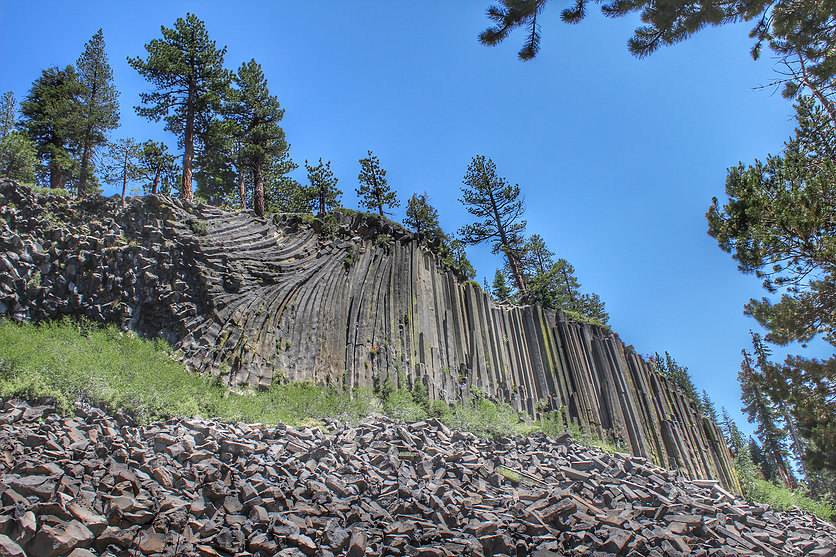
We stepped off the shuttle at Stop 7, which leads to Devils Postpile. One mile out on our hike, I was already astonished by the beautiful scenery. The gorgeous blue sky, the distance mountain range, flowing creek and lush greenery was so picturesque. Two more miles out we finally arrived at Devils Postpile.
This unique rock formation was a result of a volcanic phenomenon. Over 80,000 years ago, Devils Postpile was nothing but a lava lake. But as time progress, the lake of lava cooled into molten rock. With the help of internal stress and environmental erosion, the molten rocks are turned into the columns that we see today.

TIP: The Devils Postpile Loop is a must see. It’s a small hike uphill which takes you to the top of the pile. On the ground you can see the unique hexagonal cut of the pillars created by nature. It is created so that heat and energy can be conserved.

After going through the Devils Postpile loop, we hiked 2.5 miles to Rainbow Falls. Rainbow Falls is where the San Joaquin River makes a 100 foot drop. And as the name suggests, the foot of the waterfall casts a misty rainbow in the air.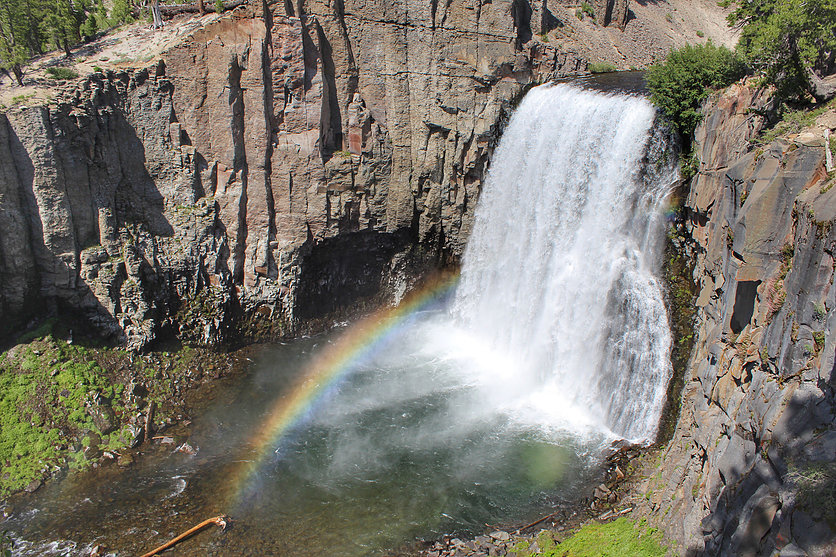
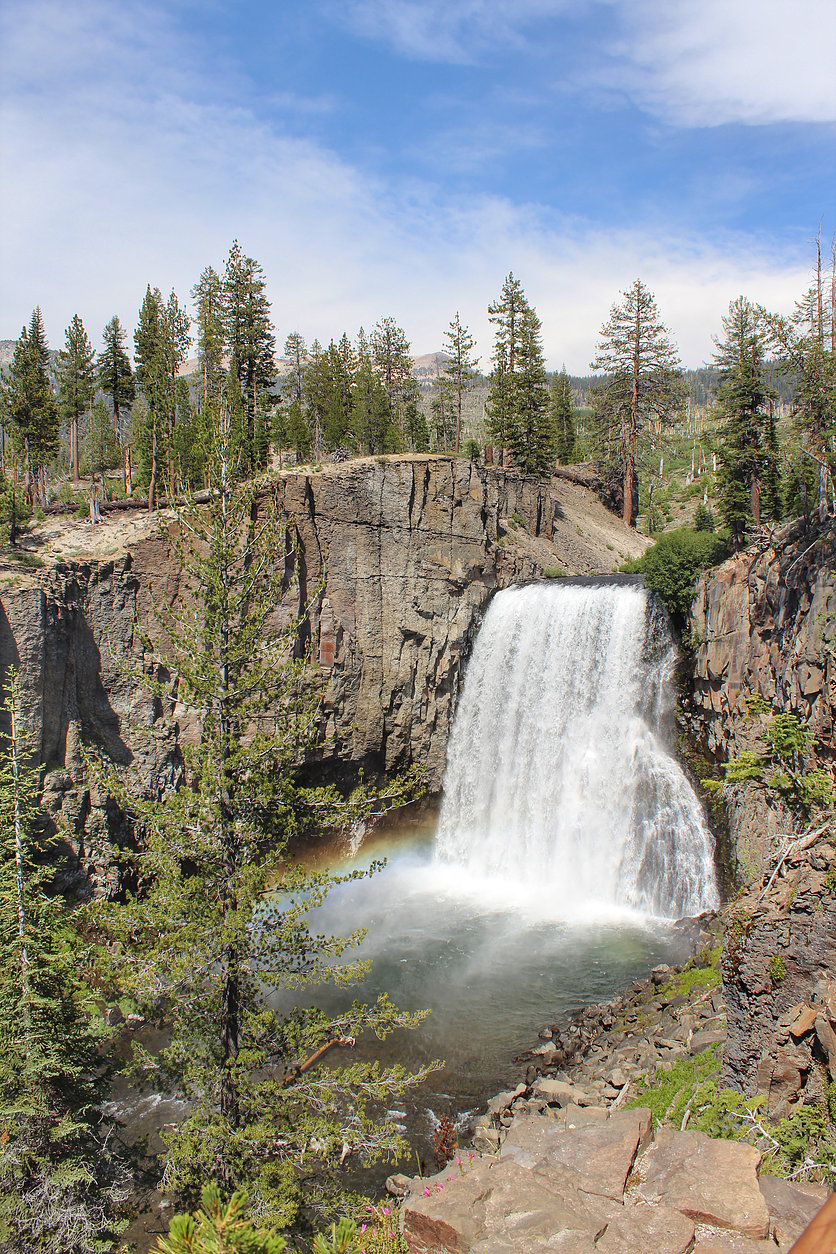
The following morning, after grabbing breakfast at a local favorite called Stove’s Kitchen, we headed North-West to Yosemite. Our goal was to finish Cathedral Lakes trail. The trail is 4.4 miles and ends at Lower Cathedral Lakes which sits at 9,585 feet in elevation.

Prior to heading to Yosemite, I did some research on trails which were ranked by difficulty. The trail that we were embarking on was ranked as Moderate. I consider myself to be a athletic individual. But after this trail, I may have to rethink that haha. The trail was rigorous and hard. The first 2 miles are spent trekking at an incline. We had to take several resting stops to catch our breathe.
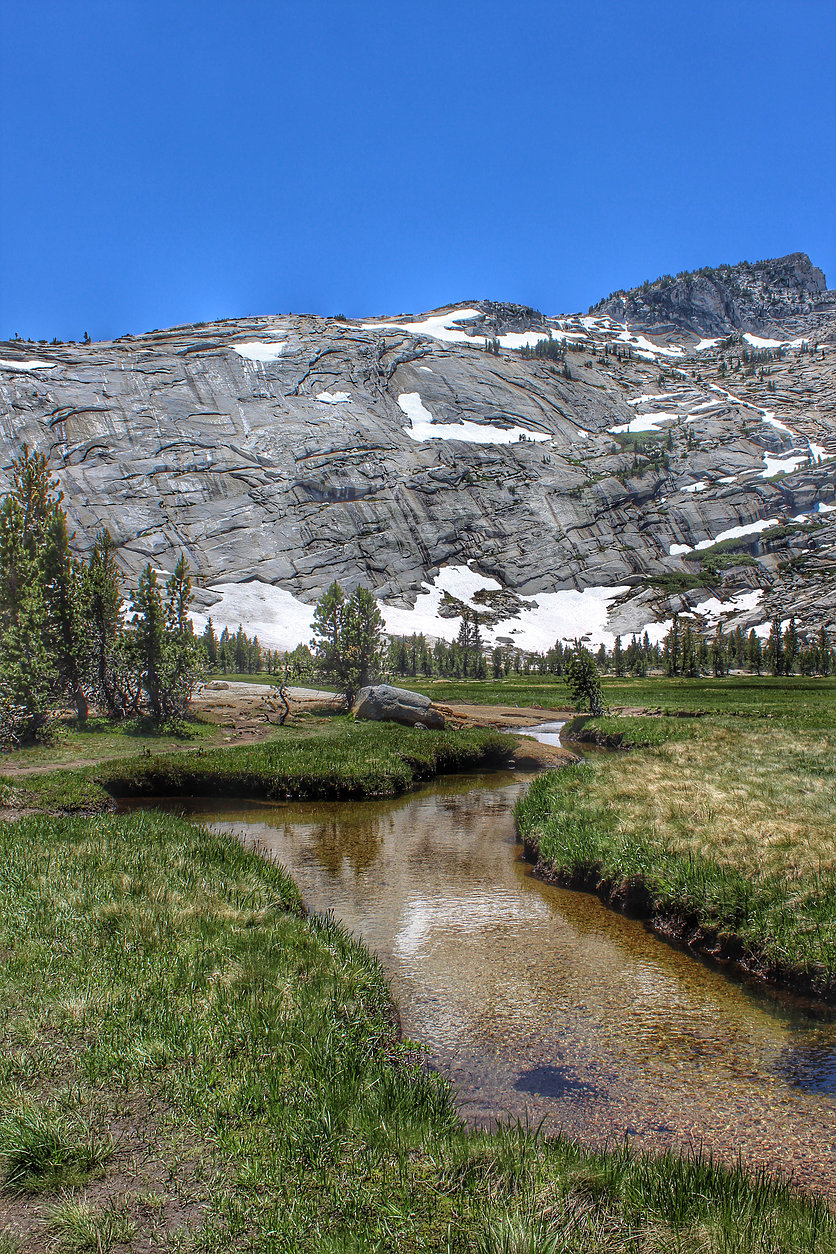
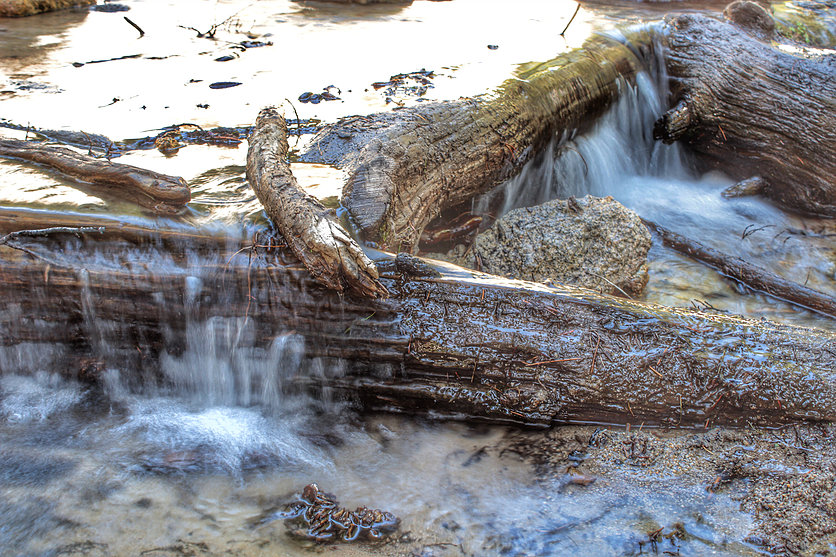
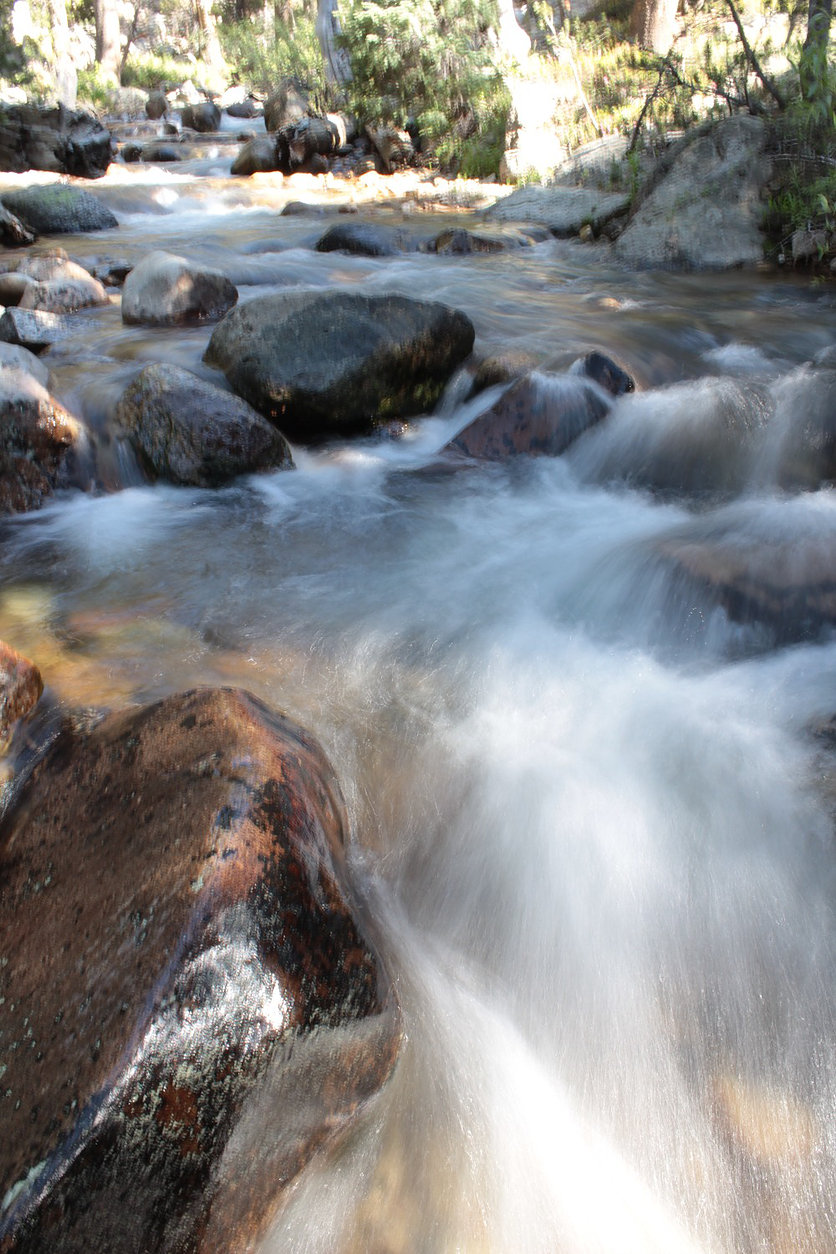
After 2 hours, we finally made it to Cathedral Lakes. We found several other hikers resting along the shore. After laying by the lake for an hour, I felt that there was something beyond the lake. We walked to the opposite side of the lake where we found a quiet meadow. A little further beyond that was a jaw dropping view of the valley. The severity of how high we have traveled began to sink in. We started at Tuolumne Meadows which is at 8,600 feet in elevation. At the end of the trail we were at 9,585 feet–a gain of 1,000 feet!
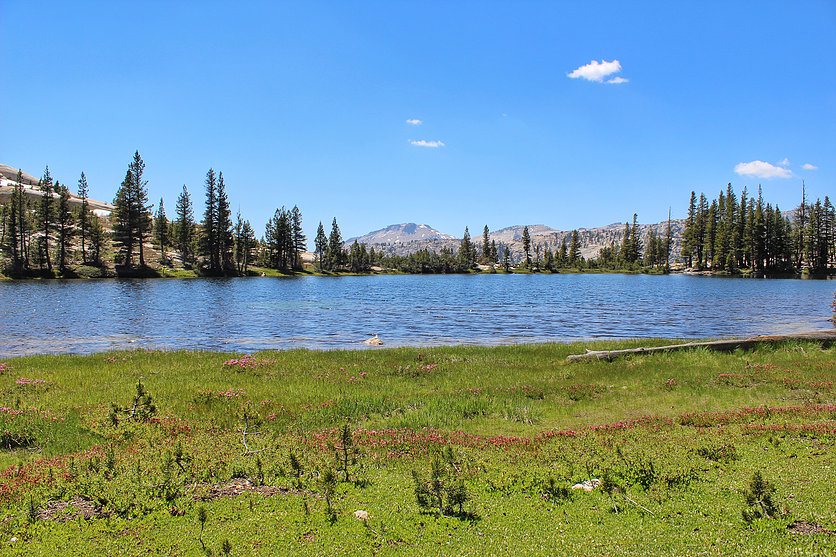
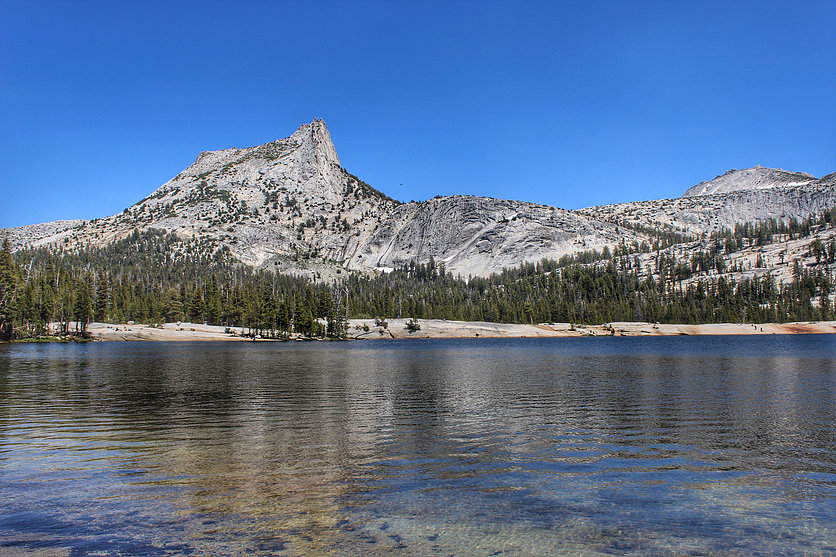


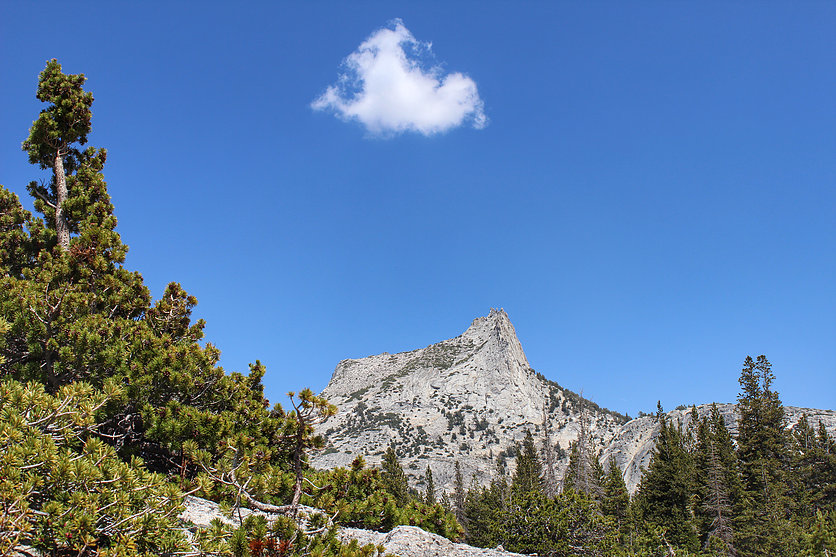
The trail took us close to 5 hours round trip. Like I’ve mentioned before, Yosemite deserves many trips. There are multiple hikes that can last a few hours to a whole day! By the time we got back to the car, we were exhausted. We made our way back to Sonora in less than 2 hours and stayed there for the night. We woke up the next morning, we feasted on a delicious breakfast provided by our generous AirBnB hosts, then traveled 2 hours back to SF.
FINAL TIP: If you plan on visiting a National Park, be sure to visit August 25-28. Entry fees are waived to celebrate the NPS’s 100th birthday!
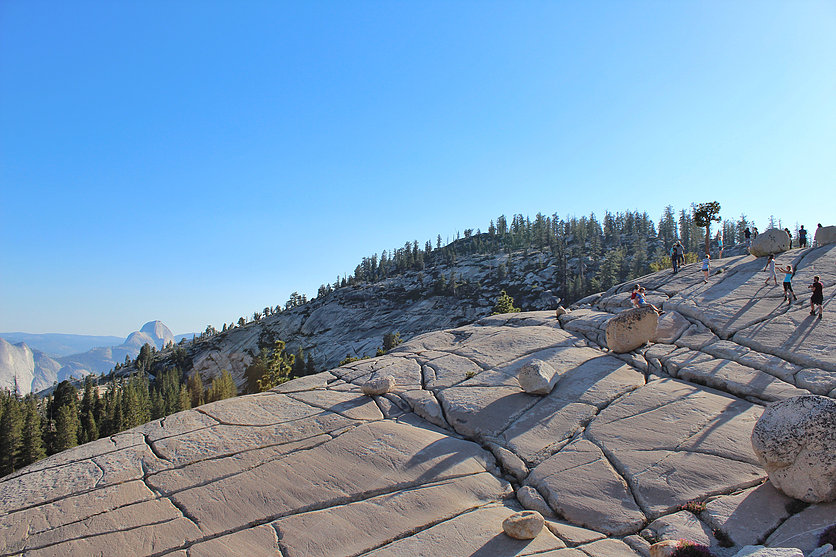

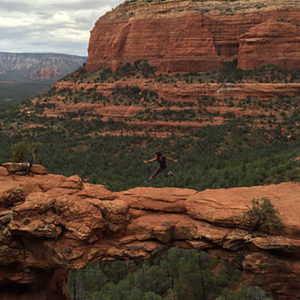

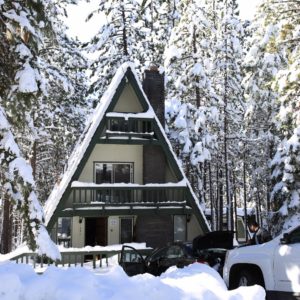


Leave a Reply